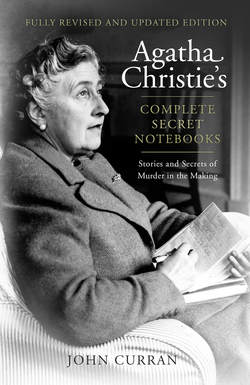Читать книгу Agatha Christie’s Complete Secret Notebooks - Агата Кристи, Agatha Christie, Detection Club The - Страница 55
S.S. Van Dine’s ‘Twenty Rules for Writing Detective Stories’
ОглавлениеWillard Huntington Wright (1888–1939) was an American literary figure and art critic who, between 1929 and 1939, wrote a dozen detective novels under the pen name S.S. Van Dine. Featuring his detective creation Philo Vance, they were phenomenally successful and popular at the time but are almost completely – and deservedly, many would add – forgotten nowadays. Vance is an intensely irritating creation, with an encyclopaedic knowledge of seemingly every subject under the sun and with a correspondingly condescending manner.
In The American Magazine for September 1928 Wright published his ‘Twenty Rules for Writing Detective Stories’. Christie knew of S.S. Van Dine; some of his novels can still be seen on the shelves of Greenway House and she mentioned him in Notebook 41, although it is doubtful if she was aware of his Rules until long after they were written. Van Dine’s Rules are as follows:
1. The reader must have equal opportunity with the detective for solving the mystery.
2. No willful tricks or deceptions may be placed on the reader other than those played by the criminal on the detective.
3. There must be no love interest.
4. The detective himself, or one of the official investigators, should never turn out to be the culprit.
5. The culprit must be determined by logical deduction – not by accident, coincidence or unmotivated confession.
6. The detective novel must have a detective in it.
7. There simply must be a corpse in a detective novel.
8. The problem of the crime must be solved by strictly naturalistic means.
9. There must be but one detective.
10. The culprit must turn out to be a person who has played a more or less prominent part in the story.
11. A servant must not be chosen as the culprit.
12. There must be but one culprit no matter how many murders are committed.
13. Secret societies have no place in a detective story.
14. The method of murder, and the means of detecting it, must be rational and scientific.
15. The truth of the problem must be at all times apparent provided the reader is shrewd enough to see it.
16. A detective novel should contain no long descriptive passages, no literary dallying with side issues, no subtly worked-out character analyses, and no ‘atmospheric’ preoccupations.
17. A professional criminal must never be shouldered with the guilt in a detective novel.
18. A crime in a detective story must never turn out to be an accident or a suicide.
19. The motives for all the crimes in detective stories should be personal.
20. A list of devices, which no self-respecting detective story writer should avail himself of including, among others:
The bogus séance to force a confession
The unmasking of a twin or look-alike
The cipher/code-letter
The hypodermic syringe and the knockout drops
The comparison of cigarette butts.
